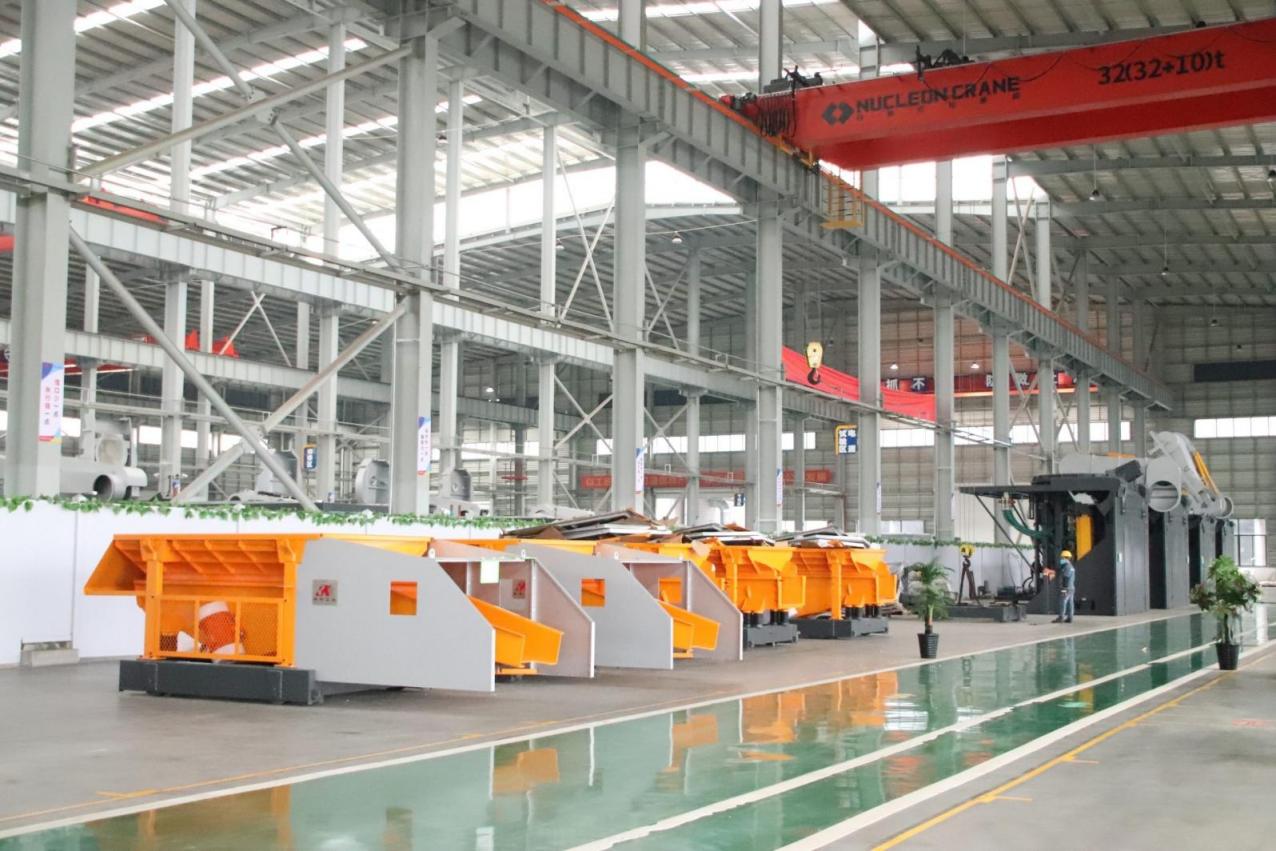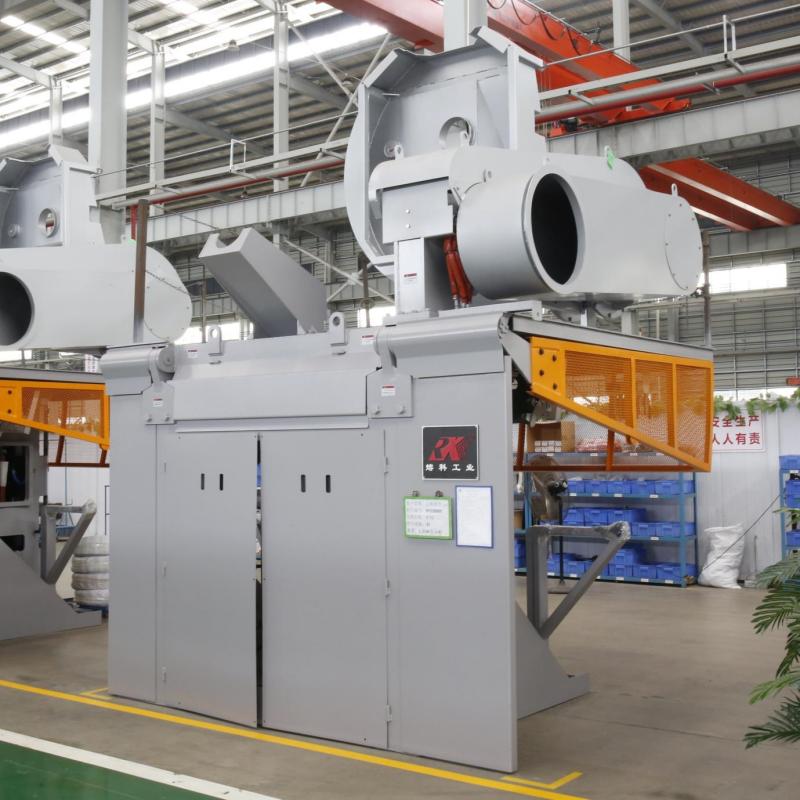Intermediate Frequency Coreless Induction Furnaces for High-Efficiency Steel Melting
Steel melting is a critical process in modern industry, providing the backbone for manufacturing and construction. Advanced methods like intermediate frequency coreless induction furnaces have revolutionized this process. These furnaces feature a high level of technological integration, including interactive windows and superior material craftsmanship, ensuring safety, stability, and energy efficiency. The enhanced processing technology and craftsmanship set a new industry standard. High-efficiency steel melting is vital for reducing energy consumption and improving production quality, making these furnaces essential for today’s industrial landscape.

Understanding Intermediate Frequency Coreless Induction Furnaces
Coreless Induction Furnaces: Definition and Basic Working Principle
Coreless induction furnaces are specialized equipment used for melting metals, notably steel. Unlike core-type induction furnaces, which have a magnetic core, coreless induction furnaces rely on a coil to generate an electromagnetic field that induces currents in the metal, heating it to its melting point. The absence of a core allows for more uniform heating and flexibility in melting different types of metals.
Comparison with Other Types of Furnaces
Compared to core-type furnaces, coreless induction furnaces offer more uniform heating and greater efficiency in energy usage. Unlike electric arc furnaces, which use high-voltage electric arcs to melt metals, coreless induction furnaces are more efficient and produce less noise and pollution. The reduced thermal shock and quicker melting times also make coreless induction furnaces more desirable in modern steel manufacturing.
Role of Intermediate Frequency in Coreless Induction Furnaces
Intermediate frequency refers to the range of frequencies typically between 1 kHz and 10 kHz used in induction heating. This frequency range is significant because it strikes a balance between the depth of penetration and the speed of heating. In coreless induction furnaces, intermediate frequency ensures that the metal is heated uniformly and quickly, enhancing the overall efficiency of the melting process.
Benefits Over Low and High-Frequency Induction Furnaces
Intermediate frequency coreless induction furnaces offer several advantages over their low and high-frequency counterparts. Low-frequency furnaces, while capable of deep penetration, are slower and less efficient. High-frequency furnaces heat quickly but can result in uneven heating and higher energy consumption. Intermediate frequency furnaces combine the benefits of both, providing efficient, uniform heating with lower energy costs and better control over the melting process.
Advantages of Using Coreless Induction Furnaces for Steel Melting
Reduced Noise Levels
Coreless induction furnaces have approximately 30% lower noise levels than similar products. This reduction in noise creates a safer and more pleasant working environment while minimizing noise pollution.
Fully Enclosed Furnace Shell
The fully enclosed furnace shell of coreless induction furnaces prevents coil ignition caused by dust pollution. This design enhancement increases safety and reliability, reducing the risk of accidents and maintenance issues.
Minimized Magnetic Radiation
Coreless induction furnaces provide secondary shielding for the magnetic field of the coil, reducing magnetic radiation to levels equivalent to 10% of similar products. This ensures a safer working environment and less interference with surrounding electronic equipment, contributing to overall workplace safety and compliance with health regulations.

Key Components and Technology
Rongke IDE Full-Time and All-Round Furnace Leakage Alarm System
- Leakage Detection Principle: Molten iron seeps from the gap of the furnace lining. The leakage current alarm is triggered when it contacts the current detection electrode. If it penetrates to the coil, the voltage detection circuit would sound alarms and indicate the specific location. The IDE furnace leakage alarm system is safe and reliable, with a patented design and EU CE safety system certification.
- Grounding Alarm Detection Principle: When the molten iron penetrates 2cm away from the coil, the leakage current of components to the ground is greater than the set value, or the conductivity of the coolant is higher than the set value, the intelligent system will sense and trigger the alarm.
Leading Energy Saving and Pioneering Technology
- Coil Design: Rongke uses TU1 grade oxygen-free copper from Chinalco Luoyang Copper Co., Ltd, and the thickest wall copper tube in the industry made by cold extrusion process. Combined with double coil technology, this achieves more energy-efficient products.
- Magnet Yoke Technology: The magnet yoke is made from high-quality cold-rolled directional silicon steel sheets, with a magnetic loss of less than 105 and a coverage rate of over 70%. It supports the induction coil from every direction and gathers the induced magnetic field to the molten bath. Water flows through both sides of the magnet yoke, balancing heat dissipation and effectively improving working life. The magnet yoke combines cooling and supporting functions, making it maintenance-free.
- Tilting Furnace Drive System: Driven by double hydraulic rods, the system is stable and does not flutter. It allows multidirectional opening and closing, with strong suction.
- Cooling System: All components are cooled by enclosed distilled water, with water temperature and pressure monitoring. German Continental brand carbon-free rubber pipes are used for durability. The cooling system is linked with the leakage alarm for added safety.
Applications and Industry Usage
Steel Industry
- Essential Role in Steel Production and Foundries: Coreless induction furnaces are indispensable in the steel industry for the melting and refining of steel. Foundries and steel mills depend on them to manufacture a wide range of steel products.
- Examples of Steel Products: Steel ingots, billets, slabs, and castings are just a few examples of the many steel products that are manufactured using coreless induction furnaces. These products serve diverse industrial and consumer needs.
Non-Ferrous Metal Industries
- Significance in Copper, Aluminum, and Other Non-Ferrous Metal Melting: Coreless induction furnaces also play a crucial role in the melting and refining of non-ferrous metals such as copper, aluminum, and others. They provide efficient control over the melting process.
- Advantages in Non-Ferrous Metal Industries: These furnaces offer fast melting rates, energy efficiency, and the ability to handle various types and sizes of metal in the non-ferrous metal industries.
Specialized Applications
- Critical for Melting Superalloys and High-Purity Metals: Coreless induction furnaces are used for melting superalloys and high-purity metals, which are essential for specialized applications in industries such as aerospace, automotive, and electronics.
- Custom Applications in Specific Industries: Industries like aerospace, automotive, and electronics utilize coreless induction furnaces for custom melting and casting of components with high precision and quality standards.
A Successful Partnership with Rongke
Project Overview
In 2019, Foshan Huifu Science and Technology Co., Ltd. engaged Rongke to supply a 10-ton series one-to-two electric furnace melting system for their steel product manufacturing. Rongke provided comprehensive services, including design, production, installation, commissioning, personnel training, and post-installation support.

Tailored Engineering Excellence
Rongke crafted an engineering plan to meet Foshan Huifu Science and Technology Co., Ltd.’s exacting product quality standards, utilizing their existing resources and factory layout. The plan’s effectiveness earned high praise from the customer.
Long-lasting Partnership
Rongke has nurtured a strong and enduring partnership with Foshan Huifu Science and Technology Co., Ltd., demonstrating their dedication to customer satisfaction and continued support.
About Foshan Huifu Science and Technology Co., Ltd.
Established in 2002, Foshan Huifu Science and Technology Co., Ltd. operates a vast 1,300-acre industrial park. The company specializes in construction, environmental protection equipment production, and steel products manufacturing. It has garnered prestigious accolades, including executive director unit of China Rubber Industry Association, member unit of China Building Waterproofing Association, and vice president unit of China Tire Recycling Association. Foshan Huifu Science and Technology Co., Ltd. is also the designated delivery warehouse for the Shanghai Futures Exchange.
Future Trends and Innovations
Technological Advancements
- Exploration of Emerging Technologies in Induction Furnace Design: Future advancements may focus on improving efficiency, automation, and control systems to enhance overall performance.
- Impact of Digitalization and Industry 4.0: Digitalization and concepts from Industry 4.0 are expected to influence the design and operation of coreless induction furnaces, leading to more connected, efficient, and data-driven processes.
Market Trends
- Growth Prospects for Coreless Induction Furnaces: The market for these furnaces is projected to grow as industries increasingly adopt them for their efficiency, reliability, and environmental benefits.
- Key Players and Market Dynamics: Intense competition is expected in the market, driving key players to focus on innovation and product development to maintain a competitive edge.
Sustainable Practices
- Innovations Aimed at Reducing Environmental Impact: Future innovations may focus on reducing energy consumption, emissions, and waste generation, making coreless induction furnaces more environmentally friendly.
- Integration with Renewable Energy Sources: Integrating these furnaces with renewable energy sources such as solar and wind energy may become a trend. To further reduce their environmental impact.
Final Words
Guangdong Rongke Intermediate Frequency Coreless Induction Furnaces are at the forefront of high-efficiency steel melting across industries. Their innovative design and technology ensure uniform heating, energy efficiency, and precise control over the melting process. These furnaces are pivotal in steel production, foundries, and non-ferrous metal industries, facilitating the production of diverse products. With technological progress and industrial development. These furnaces are expected to continue to be leaders in efficient and environmentally friendly steelmaking. Their potential integration with renewable energy and their embrace of digitalization trends will enhance their sustainability and efficiency.





